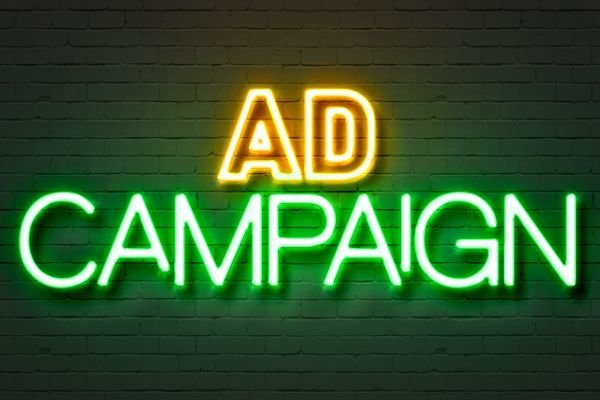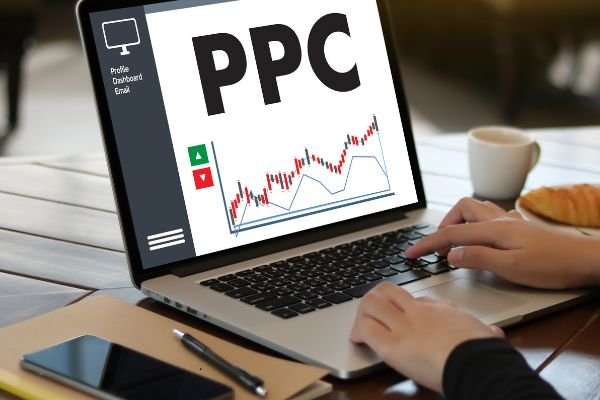A Complete Google Ads Blueprint To Maximize Your ROI
A profitable Google Ads strategy aligns clear business goals with granular campaign structure, persuasive creative, data‑driven bidding, airtight conversion tracking, and continual optimisation. When every pillar works together, advertisers typically see click‑through rates above 5 percent, conversion rates near 7 percent, and a measurable lift in return on ad spend. WordStream 2024 Google Ads Benchmarks.
Table of Contents
- What Counts as a Google Ads Strategy?
- Why ROI Should Lead Every Decision
- Set Smart Goals and KPIs
- Design a High‑Performance Account Structure
- Keyword Research & Match‑Type Tactics
- Craft Ads That Win the Click
- Modern Bidding Strategies & Budget Control
- Conversion Tracking & Attribution Essentials
- Landing Page Optimisation for Higher Quality Scores
- Leveraging Automation: Performance Max & Beyond
- Audience & Remarketing Playbooks
- Reporting, Dashboards & Iterative Optimisation
- Advanced Tactics for Seasoned Advertisers
- Costly Mistakes to Avoid
- Future Trends Through 2025
- Conclusion
- FAQ

What Counts as a Google Ads Strategy?
A Google Ads strategy is a documented framework that translates business goals into measurable advertising actions. It covers:
- Objectives & metrics (e.g., lead volume, revenue, ROAS).
- Audience definitions (demographics, intent signals).
- Campaign architecture (networks, ad groups, match types).
- Creative guidelines (copy, extensions, assets).
- Bidding & budget logic (manual vs. automated, bid modifiers).
- Testing cadence and optimisation rules.
Without this blueprint, accounts drift, budgets bloat, and ROI suffers.

Why ROI Should Lead Every Decision
Benchmark Performance at a Glance
| Metric | Search Benchmark (All Industries) | Display Benchmark | Source |
| Click‑through rate (CTR) | 5.06 % | 0.46 % | WordStream 2024 |
| Conversion rate (CVR) | 6.96 % | 0.57 % | WordStream 2024 |
| Average cost per click (CPC) | $2.16 | $0.55 | Databox 2024 |
Tip: If your metrics lag by more than 20 percent, prioritise structural fixes before raising bids.
Set Smart Goals and KPIs
- Start with revenue targets. Work backward to required leads or sales.
- Translate revenue into Google Ads KPIs such as target CPA or target ROAS.
- Use micro‑conversions (eBook downloads, demo requests) only if they correlate with revenue.
- Define acceptable payback windows (days or weeks) so bidding algorithms have a clear target.
A clear KPI framework enables smart bidding strategies like Maximise Conversion Value with target ROAS to optimise toward profitability rather than volume alone.
Design a High‑Performance Account Structure
Granular structure equals better Quality Scores and cheaper clicks. Follow the “3‑3‑3” rule for new accounts:
- 3 campaigns: separate by core product or funnel stage.
- 3 ad groups per campaign: isolate tight keyword themes.
- 3 ads per ad group: provide enough creative for Google’s asset rotation.
Pro insight: Use campaign‑level brand exclusions to prevent Performance Max from cannibalising branded Search traffic.
Internal cross‑service alignment is vital. Collaborate with the Eclipse Marketing paid media and SEO services teams to ensure keyword strategy and organic content support each other.
Keyword Research & Match‑Type Tactics
Step‑by‑Step Workflow
- Mine seed ideas from Search Console, competitor ads, and in‑house sales calls.
- Cluster keywords by intent: informational, navigational, transactional.
- Layer match types strategically:
- Exact for high‑intent, high‑value terms.
- Phrase for mid‑volume queries.
- Broad (with audience signals) to uncover new pockets of demand.
- Add negatives continually to maintain relevance.
Automated bidding now handles query matching more aggressively; therefore, monitoring search‑term reports weekly is non‑negotiable.
Craft Ads That Win the Click
Responsive Search Ads (RSAs) dominate modern ad formats. To maximise ad strength:
- Pin at least one headline featuring the primary keyword (“Google Ads Strategy Tips”).
- Highlight unique value propositions (“ROI‑Driven Agency”, “No Long‑Term Contracts”).
- Use dynamic keyword insertion sparingly, avoiding awkward phrasing.
- Leverage all extensions (sitelinks, callouts, structured snippets). According to Google, ads with 4+ extensions can increase CTR by 20 percent.
- Refresh creative quarterly to prevent ad fatigue.
Need expert creative help? Explore our Google Ads management experts for professionally written assets.

Modern Bidding Strategies & Budget Control
| Automated Strategy | Best Use Case | Watch‑outs |
| Maximise Conversions | Rapid lead generation when budget is strict | Confirm accurate conversion tracking first. |
| Target CPA | Scaling leads at predictable cost | May throttle volume if target too low. |
| Maximise Conversion Value with tROAS | E‑commerce revenue growth | Needs 30+ conversions in last 30 days. |
| Enhanced CPC | Transitional step from manual bids | Limited machine‑learning power. |
A July 2024 Google Ads update allows optional target fields inside Maximise Conversions and Maximise Conversion Value, giving advertisers hybrid control between volume and efficiency.
Budget tips
- Allocate 70 percent to proven campaigns, 20 percent to experiments, 10 percent to innovation.
- Use Performance Planner to model spend scenarios before large budget shifts.
- Set shared budgets cautiously; they can mask under‑performing campaigns.
Conversion Tracking & Attribution Essentials
- Enable enhanced conversions to recover post‑cookie data gaps. Google Ads Help
- Align GA4 events and Google Ads conversions.
- Use data‑driven attribution (DDA) as default.
- Import offline conversions from your CRM to refine bidding accuracy.
Landing Page Optimisation for Higher Quality Scores
Google rewards relevance and speed. Follow this checklist:
- Match headline to ad copy within 15 words.
- Keep mobile load time under 2.5 seconds; compress images and leverage CDN.
- Use clear hero visuals and a single call to action above the fold.
- Add trust signals (reviews, badges, privacy).
- Test form‑length; shorter forms raise conversion rate by up to 120 percent for B2B.
If your landing pages lag, collaborate with our web design team to implement CRO best practices quickly.

Leveraging Automation: Performance Max & Beyond
Performance Max (P‑Max) uses machine‑learning to distribute ads across Search, Display, YouTube, Discover, Maps, and Gmail. To extract maximum value:
- Provide rich audience signals. Upload remarketing lists, Customer Match, and custom intent segments.
- Supply high‑quality creative assets (images, videos, headlines).
- Run campaigns for at least six weeks before judging results; algorithms need data to stabilise.
- Exclude low‑margin products via listing groups or feed rules to protect ROAS.
- Monitor Insights tab for new search themes unlocked by P‑Max.
Audience & Remarketing Playbooks
- RLSA (Search Remarketing): Bid 20–40 percent higher for past site visitors.
- Customer Match: Leverage CRM email lists to drive repeat purchases.
- Video remarketing: Use skippable in‑stream ads to re‑engage cold leads at pennies per view.
- Similar Segments sunset: Prepare for look‑alike alternatives as Google phases similar audiences in 2025.
Reporting, Dashboards & Iterative Optimisation
A live dashboard (example visual above) allows swift decisions across metrics such as cost, CTR, CPC, and conversions. Build yours in:
- Looker Studio connected to Google Ads API.
- Agency‑grade tools like AgencyAnalytics or Supermetrics.
- Microsoft Power BI for multi‑channel reporting.
Key optimisation cadence:
- Daily: Check spend anomalies > 15 percent.
- Weekly: Review search‑term reports, add negatives, pause ads rated “Low” by Ad Strength.
- Monthly: Analyse Quality Score drift, auction‑insights competitor moves, and adjust budgets.
- Quarterly: Execute creative refresh, restructure under‑performing ad groups, and revisit KPIs.

Need hands‑on analysis? Get in touch with our analysts for a free audit.
Advanced Tactics for Seasoned Advertisers
- Feed‑based Search (IF functions): Dynamically insert product names and prices.
- Scripts & Rules: Automate pausing of keywords with CPA 2× goal.
- First‑party data layering: Combine GA4 predictive audiences with Customer Match for high‑intent segments.
- Geo‑bid modifiers: Boost bids where store locations exist to amplify omnichannel revenue.
- Cross‑network budget reallocation: Shift spend from Display to Search automatically when impression share falls below 80 percent.
Costly Mistakes to Avoid
- Neglecting conversion tracking before activating Smart Bidding.
- Running broad match without negatives leading to irrelevant spend.
- Over‑segmenting too early—resulting in campaigns with insufficient data.
- Ignoring landing‑page load speed, harming Quality Scores.
- Failing to refresh creatives at least every 90 days, lowering CTR.
Future Trends Through 2025
- AI‑generated assets inside Google Ads will auto‑create headlines and images from site content—opt‑in controls matter.
- Cookie‑less measurement pushes adoption of enhanced conversions and privacy‑safe APIs.
- Query‑less advertising grows via P‑Max and Demand Gen, emphasising audience over keyword.
- Real‑time signals (store visits, inventory levels) will feed bids, unlocking hyper‑local ROAS gains.
- Regulatory scrutiny may restrict certain remarketing practices; plan compliant alternatives now.
Stay ahead by partnering with a specialised Denver SEO agency that understands integrated paid‑and‑organic strategies.
Conclusion
Maximising ROI in Google Ads demands disciplined strategy, not guesswork. By setting precise goals, structuring accounts intelligently, crafting compelling ads, leveraging smart bidding, and iterating through data‑driven insights, advertisers consistently outperform industry benchmarks. Adopt the frameworks in this guide, monitor results rigorously, and your Google Ads budget transforms from cost centre into growth engine.
FAQ
What is a good ROAS for Google Ads?
A healthy return on ad spend often starts at 400 percent ( $4 revenue per $1 cost), though targets vary by margin and lifetime value.
How long should a campaign run before optimisation?
Allow 10–14 days or at least 50 conversions for algorithms to stabilise before making bid or budget changes.
Does Performance Max replace Search campaigns?
No. Treat P‑Max as complementary, using exclusions and shared budgets so it expands reach without cannibalising high‑intent Search traffic.
How often should ad creatives be updated?
Refresh headline variants quarterly and imagery or video assets every 60–90 days to maintain engagement and relevance.

Mike has over 5 years of experience helping clients improve their business visibility on Google. He combines his love for teaching with his entrepreneurial spirit to develop innovative marketing strategies. Inspired by the big AI wave of 2023, Mike now focuses on staying updated with the latest AI tools and techniques. He is committed to using these advancements to deliver great results for his clients, keeping them ahead in the competitive online market.
